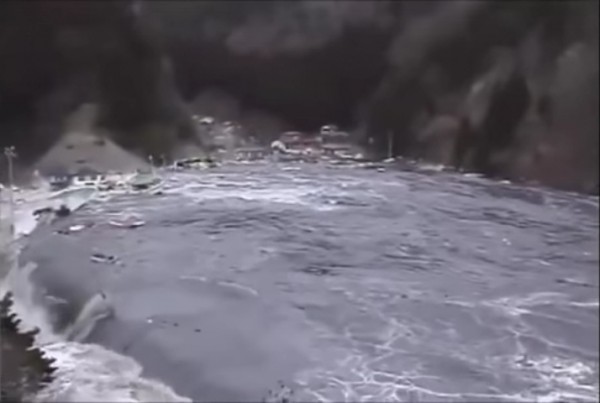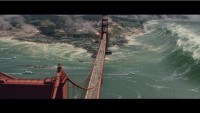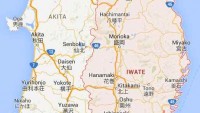Ancient Megatsunami: Almost As High As Eiffel Tower
| Darlene Tverdohleb | | Oct 07, 2015 09:13 AM EDT |
(Photo : 震災・災害CH) Seawater has overflowed the tall dikes due to the tsunami in Japan.
We live on sometimes violent and dynamic planet. Also, it is merely that we live on it for a relatively short period of geologic time, hence missing most of the action.
On Oct. 5, Monday, scientists drove the point home in a study that is published in Science Advances that suggests the occurrence of an astounding powerful megatsunami off the coast of Africa, in the Cape Verde Islands, about 73,000 years ago. Around that time, scientists believe that a large flank of volcanic island of Fogo collapsed into the ocean, which unleashed a giant wave of 800 feet in height - almost as high as the Eiffel Tower - that traveled 30 miles to Santiago island where it would have done extraordinary things, said Chicago Tribune.
Like Us on Facebook
The very huge wave pushed around huge boulders and pebbles, The Huffington Post added. In theory, such an event could happen again some time. Any volcano that is steep, unstable, tall, and active is enough to be prone to a collapse that can ensue megatsunamis, Dr. Ricardo Ramalho said.
Dr. Ramalho is an adjunct scientist at Lamont-Doherty Earth Observatory, Columbia University in Palisades, New York. He is also the lead author of the research that is published by the above mentioned journal. He added that very low frequency with very high impact events are estimated to happen though the probability is very small but nevertheless will happen again.
As the theory goes, when the powerful wave hit that it will surge all the way over the top of more than 600 feet, as high as a cliff or the Eiffel Tower, can ultimately attain water levels of nearly 900 feet above sea level. Then it can also scour large boulders from below or maybe directly tear them from the rock itself and carry them to the top of the plateau, in which scientists would then later identify them.
The new study, however, originated with a simple mystery when Dr. Ramalho was on Santiago in 2007 and saw the large boulders on top of the high plateau with the ends in a steep cliff.
Tagsmegatsunami, Eiffel Tower, science advances, Cape Verde Islands, Santiago
©2015 Chinatopix All rights reserved. Do not reproduce without permission
EDITOR'S PICKS
-

Did the Trump administration just announce plans for a trade war with ‘hostile’ China and Russia?
-

US Senate passes Taiwan travel bill slammed by China
-

As Yan Sihong’s family grieves, here are other Chinese students who went missing abroad. Some have never been found
-

Beijing blasts Western critics who ‘smear China’ with the term sharp power
-

China Envoy Seeks to Defuse Tensions With U.S. as a Trade War Brews
-

Singapore's Deputy PM Provides Bitcoin Vote of Confidence Amid China's Blanket Bans
-

China warns investors over risks in overseas virtual currency trading
-

Chinese government most trustworthy: survey
-

Kashima Antlers On Course For Back-To-Back Titles
MOST POPULAR
LATEST NEWS
Zhou Yongkang: China's Former Security Chief Sentenced to Life in Prison

China's former Chief of the Ministry of Public Security, Zhou Yongkang, has been given a life sentence after he was found guilty of abusing his office, bribery and deliberately ... Full Article
TRENDING STORY

China Pork Prices Expected to Stabilize As The Supplies Recover

Elephone P9000 Smartphone is now on Sale on Amazon India

There's a Big Chance Cliffhangers Won't Still Be Resolved When Grey's Anatomy Season 13 Returns

Supreme Court Ruled on Samsung vs Apple Dispute for Patent Infringement

Microsoft Surface Pro 5 Rumors and Release Date: What is the Latest?












